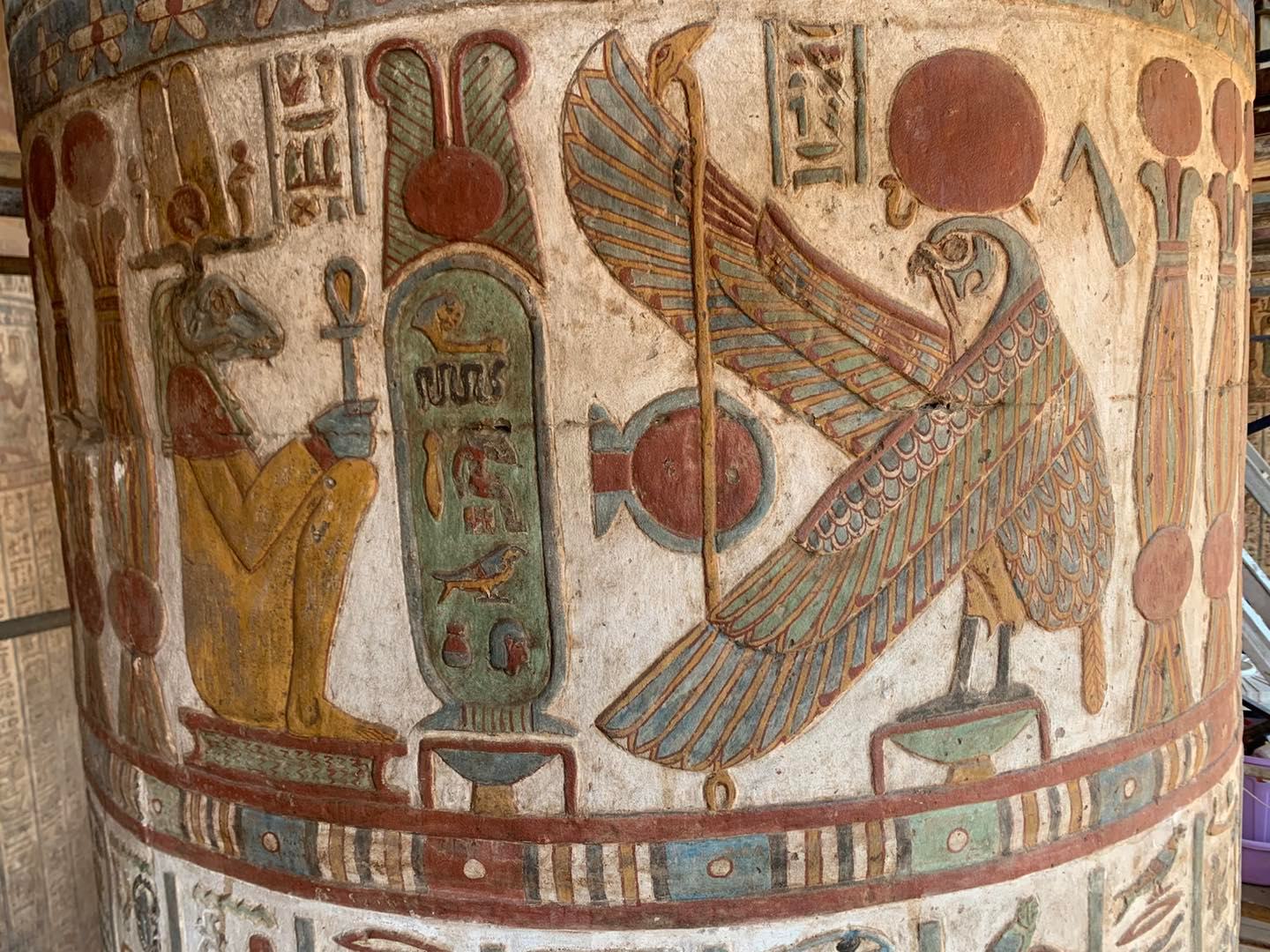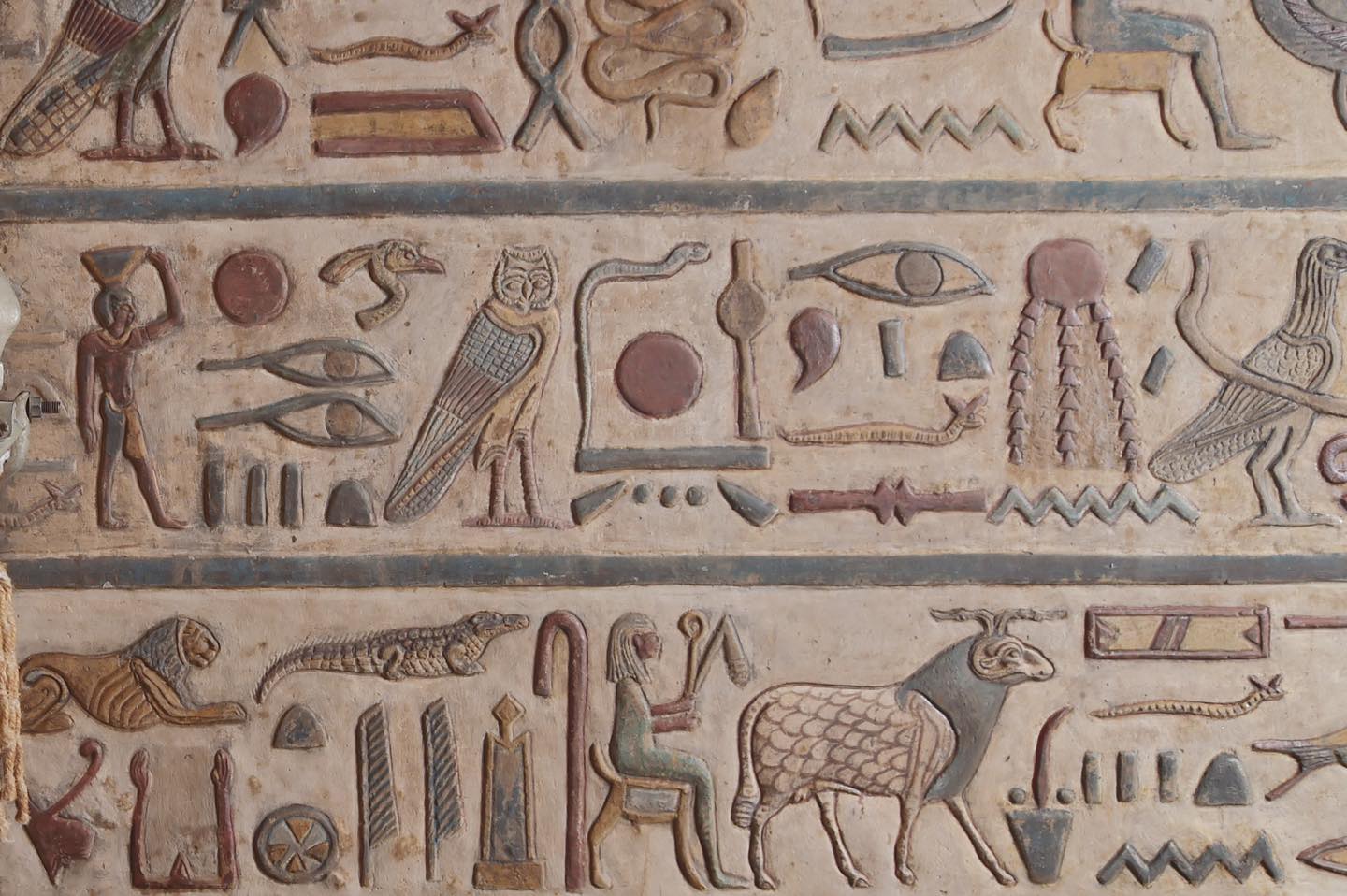CAIRO – 15 May 2022: The joint Egyptian-German archaeological mission working in Esna Temple succeeded in revealing for the first time the inscriptions, reliefs and colors on the ceilings and walls of the temple, after completing the cleaning works taking place as part of the temple's restoration project.
Secretary General of the Supreme Council of Antiquities Mustafa Waziri explained that the restoration and cleaning process resulted in the appearance of original and bright inscriptions and colors under the middle ceiling above the entrance to the temple, which is located at a height of 14 meters.
According to Waziri, the relief depicts 46 eagles in two rows, 24 of them carry an eagle's head and represent Nekhbet, the goddess of Upper Egypt. The other 22 have a cobra head and represent Wadjet, the goddess of Lower Egypt.



Moreover, Waziri Pointed out that none of the drawings or inscriptions of this ceiling appeared in the previous scientific publication of the French Egyptologist Serge Soniron, who recorded the inscriptions of the temple between 1963 and 1975.
Head of the Central Administration for the Registration of Egyptian Antiquities and head of the archaeological mission from the Egyptian side Hisham el-Leithi added that the temple's colorful inscriptions have suffered over the past centuries from the accumulation of thick layers of soot, dust and dirt, in addition to the remains of birds, bats, spiders' nests, as well as salt calcifications left over from the factors of time nearly 2000 years ago.
This necessitated the preparation of a restoration and development project for the temple to preserve it and its unique and distinct inscriptions, with funding from the American Research Center in Egypt.
For his part, Ahmed Imam, director of the restoration team, said that the restoration team found a Greek inscription drawn in red ink that was completely covered under black soot while cleaning the western wall frieze in the axis of the temple, pointing out that the initial studies of this text suggest that it dates back to the period of Emperor Domitian (81-96 AD), where the inscription records the day and month (Epiphi 5), which corresponds to the reign of Domitian at the end of June or the beginning of July.
It is likely that this was the time when the construction of the Esna Temple was completed.
Comments
Leave a Comment